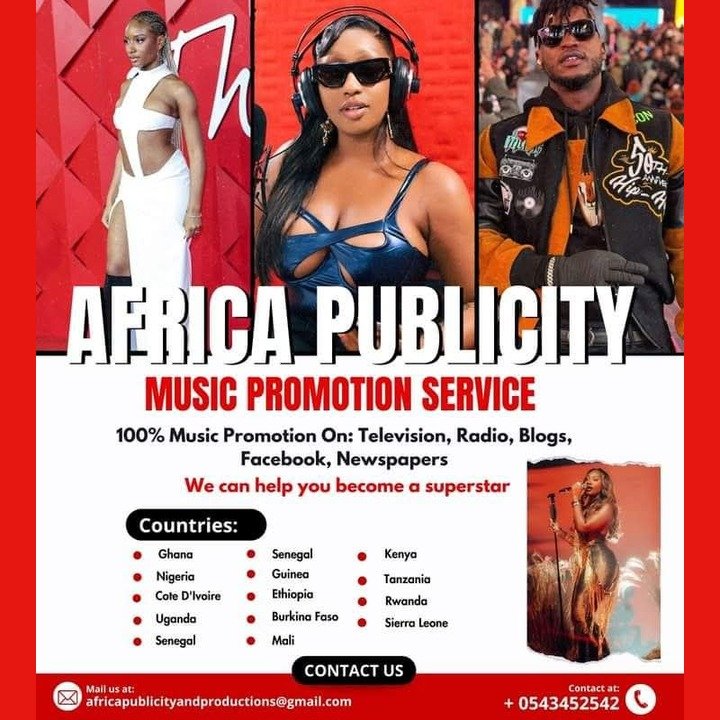Tiwa Savage and Brandy
Source: Africa Publicity
In a vibrant neighborhood of Lagos, Nigeria, lived Kelechi, a young and ambitious Afrobeat artist. He grew up surrounded by the rhythms of his homeland, where music was not just a hobby but a way of life. Kelechi had always dreamt of taking his music to the world stage, inspired by the success of African musicians who had risen to global prominence. Yet, he knew that breaking into the global market was no easy task. The challenge lay not just in talent but in gaining recognition beyond the borders of Africa.
One evening, as Kelechi was working on a new track in his small home studio, he received a message from a friend, Amina, who lived in Accra, Ghana. Amina was a talented singer and songwriter, known for her soulful voice that carried the essence of her Ghanaian heritage. She had collaborated with several artists across West Africa but, like Kelechi, yearned for global recognition.
“Kelechi,” the message read, “I’ve been thinking about our music and how we can reach a broader audience. What do you think about collaborating with artists from different parts of Africa and beyond? I believe this could be our path to international success.”
Kelechi pondered Amina’s suggestion. He had always been a solo artist, crafting his sound with a deep connection to his Nigerian roots. But the idea of collaborating with artists from different regions intrigued him. It was a chance to blend cultures, sounds, and perspectives, creating something new and unique that could resonate with audiences worldwide.
A few days later, Kelechi flew to Accra to meet Amina. They spent hours discussing music, culture, and their shared dreams. Amina introduced him to Kwame, a highlife musician from Kumasi, whose music was a beautiful blend of traditional and modern sounds. The three artists quickly realized that their styles, though distinct, could complement each other in ways they had never imagined.
They decided to work on a song together, one that would encapsulate the spirit of West Africa while appealing to a global audience. The track, titled “Unity in Rhythm,” began to take shape in a modest studio in Accra. Kelechi’s Afrobeat rhythms formed the backbone of the song, Amina’s soulful voice added depth and emotion, and Kwame’s highlife melodies brought a lively, joyful energy.
As the song progressed, Kelechi suggested they take the collaboration a step further by involving artists from other parts of Africa. “What if we could make this a Pan-African project?” he proposed. “Imagine bringing in musicians from East, North, and Southern Africa. It would be a celebration of our continent’s diversity, and it could help us reach an even wider audience.”
Amina and Kwame were excited by the idea. They reached out to Nia, a talented singer from Nairobi, Kenya, known for her fusion of Afro-pop and Benga, and Samir, a Moroccan DJ who had gained a following in Europe with his unique blend of electronic music and North African beats. Both artists were thrilled to be part of the project.
With each new collaborator, “Unity in Rhythm” evolved, becoming a true representation of Africa’s rich musical heritage. Nia’s Benga guitar riffs intertwined with Kelechi’s Afrobeat rhythms, while Samir’s electronic beats added a modern twist, making the song both traditional and contemporary. The result was a track that was unmistakably African but with a sound that could appeal to listeners around the world.
The team knew that creating the song was just the beginning. To truly achieve global recognition, they needed to ensure that “Unity in Rhythm” reached the right ears. Amina, who had connections in the music industry, suggested they release the song through a prominent international label. They also planned to shoot a music video that would showcase the diverse landscapes and cultures of Africa, from the bustling streets of Lagos to the serene deserts of Morocco and the vibrant markets of Nairobi.
As the release date approached, the team began promoting the song on social media, reaching out to fans across Africa and beyond. They used platforms like Instagram, TikTok, and YouTube, where African music was gaining popularity, especially among young people who were eager to explore new sounds. They also collaborated with influencers and bloggers who shared their music with followers, creating a buzz around the project.
When “Unity in Rhythm” was finally released, it quickly gained traction. The music video, which beautifully captured the essence of Africa, went viral, attracting millions of views within days. The song was praised for its innovative fusion of sounds, its celebration of African culture, and its message of unity through music.
But the real breakthrough came when the song was picked up by an international radio station in London, known for promoting world music. The station’s DJ, a fan of African music, played “Unity in Rhythm” during his prime-time show, introducing the song to a global audience. The response was overwhelming. Listeners from different parts of the world, from Europe to North America to Asia, were captivated by the song’s infectious rhythm and soulful melodies.
The success of “Unity in Rhythm” opened doors for Kelechi, Amina, Kwame, Nia, and Samir. They were invited to perform at music festivals in Europe and the United States, where they shared the stage with some of the biggest names in the industry. The collaboration also led to more opportunities for cross-continental partnerships, as artists and producers from around the world reached out to work with them.
For Kelechi, the journey from a small studio in Lagos to performing on stages around the world was a dream come true. He had always believed in the power of African music, but it was the collaboration with artists from different regions that had truly unlocked the door to global recognition. The experience taught him that music, like culture, is enriched by diversity. By coming together, blending their unique sounds and perspectives, they had created something that resonated with people everywhere.
As they stood on stage at a festival in Paris, performing “Unity in Rhythm” to a crowd of thousands, Kelechi realized that this was just the beginning. African music had always had the potential to captivate the world, and through collaboration, that potential was being realized. Together, they had not only achieved global recognition but had also shown the world the beauty and diversity of African music.
In the months that followed, the success of “Unity in Rhythm” inspired other African artists to collaborate across borders and genres. The project became a symbol of what was possible when artists worked together, transcending geographical and cultural boundaries. It was a reminder that, in music as in life, unity and collaboration could lead to greatness.
For Kelechi, Amina, Kwame, Nia, and Samir, the journey was far from over. They continued to create music, both individually and together, always pushing the boundaries of what African music could be. And with each new collaboration, they brought a little more of Africa to the world stage, one rhythm at a time.
In this story, I used various African areas and character names to highlight the diversity of the continent. The narrative focused on how collaboration can be a powerful tool for achieving global recognition in the music industry, showcasing the importance of unity in a professional, simple, and understandable way.








